The selection of wall or floor tiles for a shower is a crucial decision that can greatly impact the overall aesthetic and functionality of your bathroom. With a plethora of options available in the market, choosing the right tiles can be a daunting task. It is important to consider various factors such as material, size, color, and maintenance requirements before making a decision. In this article, we will explore the different aspects of selecting wall or floor tiles for a shower to help you make an informed choice. When it comes to choosing between wall and floor tiles for a shower, one of the key considerations is the material. There are several options available, including ceramic, porcelain, natural stone, and glass tiles. Each material has its own unique characteristics and benefits.
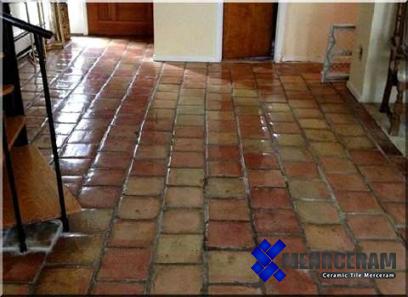
.
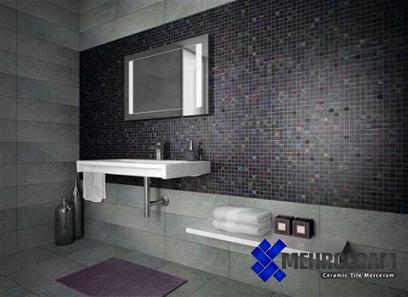 Ceramic tiles are a popular choice for showers due to their durability, water resistance, and wide range of colors and patterns. Porcelain tiles, on the other hand, are known for their strength, low porosity, and easy maintenance. Natural stone tiles such as marble, travertine, and slate can add a luxurious and elegant touch to your shower but require more maintenance compared to ceramic and porcelain tiles. Glass tiles are another stylish option that can create a modern and sleek look in your shower. In addition to the material, the size and shape of the tiles can also make a significant difference in the overall look of your shower. Larger tiles can make a small shower appear more spacious, while smaller tiles can create a textured and intricate look. Rectangular tiles can elongate the walls and create a modern feel, while hexagonal or mosaic tiles can add a unique and artistic touch to your shower. Consider the size of your shower, the layout of the space, and your personal style preferences when choosing the size and shape of the tiles. Color is another important factor to consider when selecting wall or floor tiles for a shower. The color of the tiles can set the tone for the entire bathroom and influence the mood of the space. Light-colored tiles can make a small shower feel bright and airy, while dark-colored tiles can create a dramatic and sophisticated look. Neutral colors such as white, beige, and gray are timeless choices that can easily complement any design scheme. Bold and vibrant colors can add a pop of personality and make a statement in your shower. Consider the overall color scheme of your bathroom, the natural light in the space, and your personal preferences when choosing the color of the tiles. Maintenance requirements are also a crucial factor to consider when selecting wall or floor tiles for a shower. Different materials and finishes have varying levels of maintenance needs. Ceramic and porcelain tiles are generally low-maintenance and easy to clean, making them ideal for showers. Natural stone tiles, on the other hand, require regular sealing to prevent staining and water damage. Glass tiles can show water spots and soap scum more easily, requiring frequent cleaning.
Ceramic tiles are a popular choice for showers due to their durability, water resistance, and wide range of colors and patterns. Porcelain tiles, on the other hand, are known for their strength, low porosity, and easy maintenance. Natural stone tiles such as marble, travertine, and slate can add a luxurious and elegant touch to your shower but require more maintenance compared to ceramic and porcelain tiles. Glass tiles are another stylish option that can create a modern and sleek look in your shower. In addition to the material, the size and shape of the tiles can also make a significant difference in the overall look of your shower. Larger tiles can make a small shower appear more spacious, while smaller tiles can create a textured and intricate look. Rectangular tiles can elongate the walls and create a modern feel, while hexagonal or mosaic tiles can add a unique and artistic touch to your shower. Consider the size of your shower, the layout of the space, and your personal style preferences when choosing the size and shape of the tiles. Color is another important factor to consider when selecting wall or floor tiles for a shower. The color of the tiles can set the tone for the entire bathroom and influence the mood of the space. Light-colored tiles can make a small shower feel bright and airy, while dark-colored tiles can create a dramatic and sophisticated look. Neutral colors such as white, beige, and gray are timeless choices that can easily complement any design scheme. Bold and vibrant colors can add a pop of personality and make a statement in your shower. Consider the overall color scheme of your bathroom, the natural light in the space, and your personal preferences when choosing the color of the tiles. Maintenance requirements are also a crucial factor to consider when selecting wall or floor tiles for a shower. Different materials and finishes have varying levels of maintenance needs. Ceramic and porcelain tiles are generally low-maintenance and easy to clean, making them ideal for showers. Natural stone tiles, on the other hand, require regular sealing to prevent staining and water damage. Glass tiles can show water spots and soap scum more easily, requiring frequent cleaning.
..
 Consider your cleaning habits, time constraints, and willingness to maintain the tiles when selecting the material for your shower. In conclusion, the selection of wall or floor tiles for a shower is an important decision that should not be taken lightly. Consider the material, size, shape, color, and maintenance requirements of the tiles to ensure that they meet your functional and aesthetic needs. Whether you choose ceramic, porcelain, natural stone, or glass tiles, make sure to consider the overall design of your bathroom, the size of your shower, and your personal preferences before making a decision. With the right tiles, you can create a beautiful and functional shower space that you will enjoy for years to come. Choosing the right wall or floor tiles for your shower can transform your bathroom into a luxurious retreat that reflects your personal style. Once you have considered the material, size, shape, color, and maintenance requirements of the tiles, there are a few additional factors to keep in mind to ensure a successful selection process. One important aspect to consider when choosing tiles for your shower is the texture and finish. The texture of the tiles can impact the safety and comfort of your shower experience. While smooth tiles may be easier to clean, they can become slippery when wet, posing a safety hazard. Textured tiles, on the other hand, provide added grip and reduce the risk of slipping in the shower. Consider a slip-resistant finish for floor tiles to ensure a safer showering experience, especially for households with children or elderly individuals. Another factor to consider is the grout color and width. Grout plays a crucial role in the installation and maintenance of tiles in a shower. The color of the grout can significantly impact the overall look of the tiles. Light-colored grout can blend in with light-colored tiles and create a seamless appearance, while dark-colored grout can create contrast and highlight the pattern of the tiles. Select a grout color that complements the tiles and enhances the design of your shower.
Consider your cleaning habits, time constraints, and willingness to maintain the tiles when selecting the material for your shower. In conclusion, the selection of wall or floor tiles for a shower is an important decision that should not be taken lightly. Consider the material, size, shape, color, and maintenance requirements of the tiles to ensure that they meet your functional and aesthetic needs. Whether you choose ceramic, porcelain, natural stone, or glass tiles, make sure to consider the overall design of your bathroom, the size of your shower, and your personal preferences before making a decision. With the right tiles, you can create a beautiful and functional shower space that you will enjoy for years to come. Choosing the right wall or floor tiles for your shower can transform your bathroom into a luxurious retreat that reflects your personal style. Once you have considered the material, size, shape, color, and maintenance requirements of the tiles, there are a few additional factors to keep in mind to ensure a successful selection process. One important aspect to consider when choosing tiles for your shower is the texture and finish. The texture of the tiles can impact the safety and comfort of your shower experience. While smooth tiles may be easier to clean, they can become slippery when wet, posing a safety hazard. Textured tiles, on the other hand, provide added grip and reduce the risk of slipping in the shower. Consider a slip-resistant finish for floor tiles to ensure a safer showering experience, especially for households with children or elderly individuals. Another factor to consider is the grout color and width. Grout plays a crucial role in the installation and maintenance of tiles in a shower. The color of the grout can significantly impact the overall look of the tiles. Light-colored grout can blend in with light-colored tiles and create a seamless appearance, while dark-colored grout can create contrast and highlight the pattern of the tiles. Select a grout color that complements the tiles and enhances the design of your shower.
…
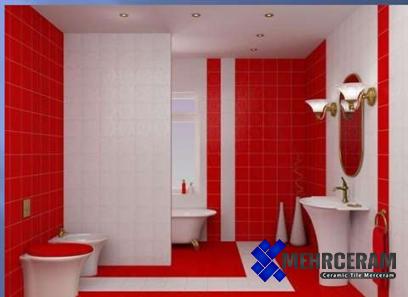 Additionally, the width of the grout lines can affect the visual impact of the tiles. Thin grout lines can create a sleek and contemporary look, while wide grout lines can add texture and definition to the tiles. Consider the installation method and layout of the tiles when selecting wall or floor tiles for your shower. The installation method can impact the durability and performance of the tiles. Thinset mortar is commonly used for ceramic, porcelain, and natural stone tiles due to its strength and water resistance. Epoxy grout is a popular choice for showers due to its durability, stain resistance, and low maintenance. Choose a reputable installer who has experience working with tiles to ensure a professional and long-lasting installation. The layout of the tiles can also enhance the aesthetic appeal of your shower. Consider different patterns such as subway, herringbone, basketweave, or vertical stack to create visual interest and focal points in the shower. Mixing different tile sizes, shapes, and colors can add dimension and personality to the space. Experiment with layout options and seek inspiration from design magazines, websites, and showrooms to find the perfect combination for your shower. Lastly, consider the overall design and style of your bathroom when selecting wall or floor tiles for your shower. Whether you prefer a classic, contemporary, rustic, or eclectic look, choose tiles that complement the existing decor and create a cohesive design scheme. Coordinate the tiles with other bathroom fixtures such as the vanity, bathtub, lighting, and accessories to achieve a harmonious and balanced aesthetic. Pay attention to details such as trim pieces, niche inserts, and accent tiles to elevate the design and add a custom touch to your shower. In conclusion, choosing the right wall or floor tiles for your shower is a multifaceted process that requires careful consideration of various factors. From material selection and size to color, texture, and layout, each decision contributes to the overall look and functionality of your shower. By balancing aesthetics with practicality and maintenance requirements, you can create a stunning shower space that reflects your personal style and enhances the beauty of your bathroom. Invest time and effort in researching, planning, and selecting the perfect tiles to achieve a shower that you will love and enjoy for years to come.
Additionally, the width of the grout lines can affect the visual impact of the tiles. Thin grout lines can create a sleek and contemporary look, while wide grout lines can add texture and definition to the tiles. Consider the installation method and layout of the tiles when selecting wall or floor tiles for your shower. The installation method can impact the durability and performance of the tiles. Thinset mortar is commonly used for ceramic, porcelain, and natural stone tiles due to its strength and water resistance. Epoxy grout is a popular choice for showers due to its durability, stain resistance, and low maintenance. Choose a reputable installer who has experience working with tiles to ensure a professional and long-lasting installation. The layout of the tiles can also enhance the aesthetic appeal of your shower. Consider different patterns such as subway, herringbone, basketweave, or vertical stack to create visual interest and focal points in the shower. Mixing different tile sizes, shapes, and colors can add dimension and personality to the space. Experiment with layout options and seek inspiration from design magazines, websites, and showrooms to find the perfect combination for your shower. Lastly, consider the overall design and style of your bathroom when selecting wall or floor tiles for your shower. Whether you prefer a classic, contemporary, rustic, or eclectic look, choose tiles that complement the existing decor and create a cohesive design scheme. Coordinate the tiles with other bathroom fixtures such as the vanity, bathtub, lighting, and accessories to achieve a harmonious and balanced aesthetic. Pay attention to details such as trim pieces, niche inserts, and accent tiles to elevate the design and add a custom touch to your shower. In conclusion, choosing the right wall or floor tiles for your shower is a multifaceted process that requires careful consideration of various factors. From material selection and size to color, texture, and layout, each decision contributes to the overall look and functionality of your shower. By balancing aesthetics with practicality and maintenance requirements, you can create a stunning shower space that reflects your personal style and enhances the beauty of your bathroom. Invest time and effort in researching, planning, and selecting the perfect tiles to achieve a shower that you will love and enjoy for years to come.


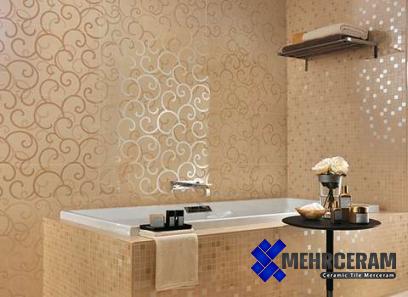


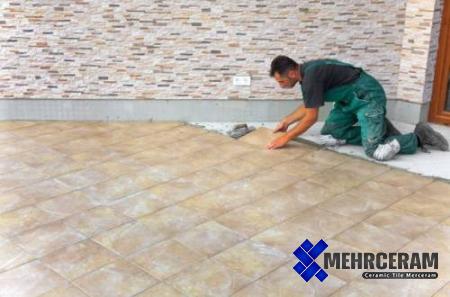

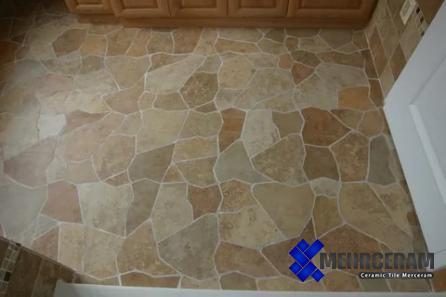

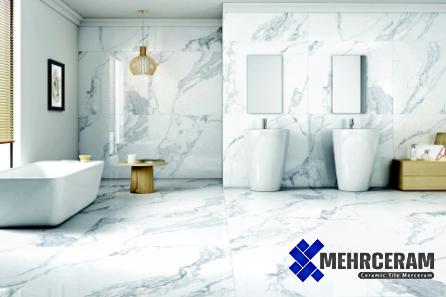
Your comment submitted.